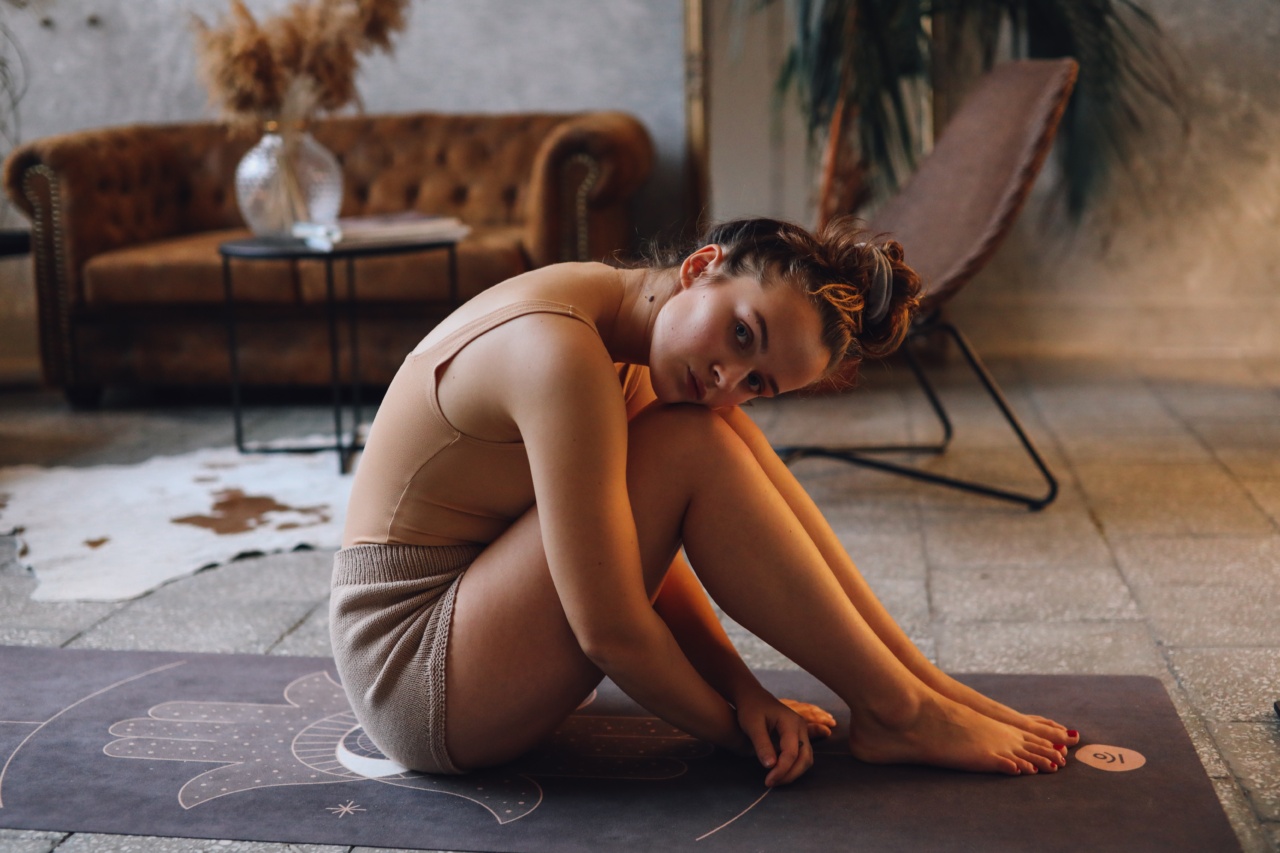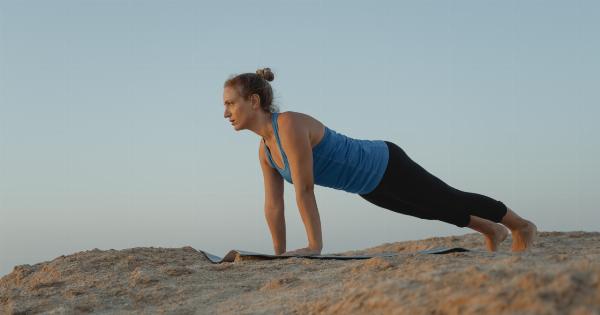Yoga is an ancient practice that originated in India thousands of years ago. It is a holistic approach to physical and mental well-being, encompassing various physical postures, breathing exercises, meditation, and ethical principles.
The word “yoga” comes from the Sanskrit word “yuj,” which means to join or unite. It aims to achieve a harmonious balance between the body, mind, and spirit.
The Benefits of Yoga
Yoga offers numerous benefits for both the body and the mind. One of the primary benefits of practicing yoga is the improvement of flexibility. Regular yoga practice helps to stretch and lengthen the muscles, making them more pliable.
This increased flexibility can enhance athletic performance and reduce the risk of injuries.
In addition to flexibility, yoga also promotes muscle strength and tone. Many yoga poses require engaging and holding various muscle groups, which helps to build strength over time.
Strong muscles support proper posture and can help prevent back pain and other musculoskeletal issues.
Another benefit of yoga is stress reduction. The combination of physical movement, deep breathing, and mindfulness during yoga practice can help calm the mind and relax the body.
This can significantly reduce stress levels and promote a sense of calm and well-being.
Besides stress reduction, yoga has been shown to improve mental clarity and focus. The practice of mindfulness and meditation during yoga stimulates the brain and enhances mental acuity.
It can boost memory, improve concentration, and increase productivity.
Yoga has also been linked to improved cardiovascular health. Certain types of yoga, such as Vinyasa or Power Yoga, involve flowing sequences of postures that elevate the heart rate and provide a cardiovascular workout.
Regular practice can lower blood pressure, enhance circulation, and improve overall heart health.
Yoga for Calmness
One of the main reasons people turn to yoga is to find calmness and peace amidst the chaos of daily life. The practice of yoga incorporates meditation, breathing exercises, and gentle movements that promote relaxation and reduce anxiety.
Yoga helps activate the parasympathetic nervous system, also known as the “rest and digest” response. This counteracts the effects of the sympathetic nervous system, which is responsible for the body’s stress response.
By activating the parasympathetic nervous system, yoga triggers a relaxation response, leading to a state of calmness.
Specific yoga poses are particularly effective in promoting calmness and tranquility. The child’s pose (Balasana), for example, is a gentle forward bend that releases tension and calms the mind.
It helps activate the parasympathetic nervous system, encouraging deep relaxation.
Another pose that promotes calmness is the legs-up-the-wall pose (Viparita Karani). This pose involves lying on your back near a wall with your legs resting against the wall.
It helps to reduce stress, relieve fatigue, and improve circulation throughout the body.
Practicing yoga in a quiet, serene environment further enhances its calming effects. Creating a dedicated space for yoga at home, with minimal distractions, can provide the perfect sanctuary for finding inner peace.
Yoga for Flexibility
Yoga is renowned for its ability to enhance flexibility. The various postures and stretches involved in yoga help to stretch and lengthen the muscles, promoting increased range of motion.
One of the key principles of yoga is to listen to your body and respect its limits. You should never force your body into a pose or stretch beyond its capabilities.
Flexibility in yoga is a gradual process that develops over time with consistent practice.
Yoga poses that are particularly effective for improving flexibility include the downward-facing dog pose (Adho Mukha Svanasana), the standing forward bend (Uttanasana), and the bridge pose (Setu Bandhasana).
These poses target various muscle groups, such as the hamstrings, hips, back, and shoulders.
The practice of yoga with a focus on flexibility also helps to prevent injuries. When muscles are flexible, they are less prone to strains and sprains.
Improved flexibility also supports correct alignment and posture, reducing the risk of chronic pain and discomfort.
Regular yoga practice can gradually loosen tight muscles and improve overall flexibility. It is essential to incorporate both stretching and strengthening poses into your yoga routine to maintain a balanced and functional body.
How to Incorporate Yoga for Calmness and Flexibility
Here are some tips to help you incorporate yoga into your daily routine for both calmness and flexibility:.
- Start with short sessions: If you are new to yoga, begin with short 10-15 minute sessions. As you become more comfortable, gradually increase the duration of your practice.
- Choose the right style: There are numerous styles of yoga, each with different focuses and intensity levels. If you are looking to enhance flexibility, consider practices such as Hatha or Yin Yoga. For calmness, try Restorative or Kundalini Yoga.
- Find an experienced teacher: Joining a yoga class or finding an experienced teacher can help you learn the correct alignment and avoid potential pitfalls. They can guide you through suitable poses for calmness and flexibility.
- Listen to your body: Always listen to your body and respect its limitations. Do not push yourself too hard or force a pose beyond your current capabilities. Gradual progress is key.
- Practice deep breathing: Deep breathing is a crucial component of yoga practice for both calmness and flexibility. Focus on slow, deep breaths during your poses to enhance relaxation and oxygenation of the muscles.
- Include meditation and mindfulness: To cultivate calmness, incorporate meditation and mindfulness practices into your yoga routine. This can involve focusing on your breath, repeating a mantra, or engaging in guided visualization.
- Be consistent: Consistency is essential in yoga practice. Aim to incorporate yoga into your routine at least a few times a week to experience the benefits of calmness and increased flexibility.
- Modify poses as needed: Yoga poses can be modified to accommodate different body types, injuries, or flexibility levels. Use props such as blocks, straps, or bolsters to assist you in achieving the correct alignment and depth in the poses.
- Warm-up before practice: Prior to starting your yoga practice, it is beneficial to warm up your body with gentle movements and stretches. This helps prepare the muscles and joints for the deeper poses and reduces the risk of injury.
- End with relaxation: Conclude your yoga practice with a few minutes of relaxation in the Corpse pose (Savasana). Allow your body and mind to fully relax and absorb the benefits of the practice.
Conclusion
Yoga is a powerful practice that offers numerous benefits for both calmness and flexibility. Regular practice can help reduce stress, improve mental clarity, enhance muscle strength, and increase range of motion.
By incorporating yoga into your daily routine and applying the tips provided, you can experience the transformative effects of yoga on both your body and mind.






























